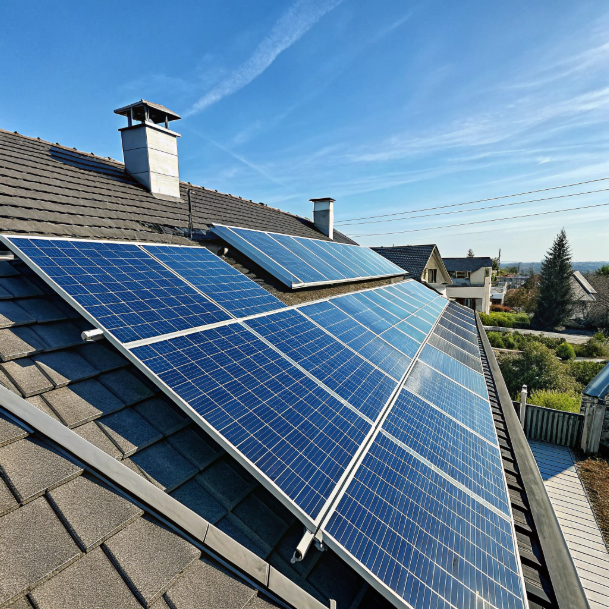Your Brand, Our Panels: A Look into Our White-Label and OEM Partnership Program
by
Your Brand, Our Panels: A Look into Our White-Label and OEM Partnership Program
Struggling to stand out in the crowded solar market[^1]? Our white-label and OEM solutions let you shine with premium panels bearing your brand.
Our partnership program enables installers and distributors to offer high-efficiency solar panels[^2] under their own brand, with full technical support and custom specifications to meet diverse market needs.
Ready to explore how our partnership can elevate your business? Let’s dive into the specifics that make our program a game-changer for industry professionals.
Decoding the Datasheet: 3 Critical Numbers Most Buyers Overlook (But Shouldn't)
Overwhelmed by solar panel specs? Missing these three numbers could cost you efficiency and ROI.
Beyond wattage and efficiency, buyers should prioritize temperature coefficient, degradation rate, and low-light performance to ensure long-term reliability and energy yield.
Dive deeper paragraph:
When evaluating solar panels, most buyers focus on peak wattage and efficiency percentage, but these tell only part of the story. The temperature coefficient indicates how much power output decreases as temperatures rise—a critical factor in hot climates. For example, a panel with a coefficient of -0.35%/°C will lose 3.5% output for every 10°C above 25°C.
The degradation rate reveals how much efficiency is lost annually; premium panels degrade only 0.5% per year versus 1% for economy models, ensuring better long-term returns.
Lastly, low-light performance determines energy production during cloudy conditions or early mornings, directly impacting daily energy harvest.
| Metric | Ideal Value | Impact on Performance |
|---|---|---|
| Temperature Coefficient | -0.3%/°C or better | Minimal loss in high heat |
| Degradation Rate | ≤0.5% per year | Longer lifespan, higher ROI |
| Low-Light Efficiency | >90% of rated output | Consistent energy in suboptimal conditions |
Understanding these metrics helps buyers avoid underperforming panels and maximize their investment.
Temperature coefficient affects hot climate performance.
True: Lower coefficients maintain output in high temperatures.
Degradation rate only matters after 10 years.
False: Annual degradation compounds, affecting lifetime yield significantly.
Case Study: How a 10MW Solar Farm Increased Output by 3% Using Our Bifacial Panels
Facing stagnant energy yields? One farm’s switch to bifacial technology[^3] unlocked hidden gains.
By implementing bifacial panels with reflective ground surfaces, a 10MW solar farm boosted annual output by 3%, translating to significant financial returns and improved project viability.
Dive deeper paragraph:
The project replaced traditional monofacial panels with bifacial modules, which capture light from both sides. Key to their success was optimizing the ground albedo effect—using light-colored gravel to reflect sunlight onto the rear side of the panels. This added an average of 8-10% additional energy capture compared to standard installations.
Further gains came from improved row spacing and tilt angles, reducing shading and maximizing exposure throughout the day. The farm also leveraged advanced monitoring systems[^4] to track bifacial gains in real-time, allowing for incremental adjustments.
Over 12 months, the 3% output increase generated an extra 300,000 kWh annually—enough to power 30 additional homes. The ROI was achieved in under two years due to higher energy sales and reduced reliance on grid backups.
| Factor | Implementation | Result |
|---|---|---|
| Ground Albedo | Light-colored gravel | +8-10% rear-side energy capture |
| Row Spacing | Optimized layout | Reduced shading, improved exposure |
| Monitoring | Real-time analytics | Continuous performance optimization |
Bifacial panels only work with snow reflection.
False: They benefit from various reflective surfaces, including ground and buildings.
A 3% output increase is negligible for large farms.
False: For 10MW farms, it adds substantial energy and revenue.
The Installer's Choice: Why Lighter, Stronger Panels Are Reducing Labor Costs by up to 15%
Tired of heavy, cumbersome installations? New panel technology is cutting labor time and costs dramatically.
Advanced lightweight and durable panels reduce installation time, handling effort, and structural requirements, leading to up to 15% lower labor costs and faster project completion.
Dive deeper paragraph:
Traditional solar panels can weigh over 50 lbs, requiring multiple installers and specialized equipment. Our newer models, incorporating advanced composite materials and frameless designs, weigh 30% less while maintaining superior durability against wind and snow loads. This reduction translates directly into labor savings: fewer workers are needed per installation, and projects complete faster.
For instance, a typical residential installation now takes 4-5 hours instead of 6-7, thanks to easier handling and mounting. The panels’ integrated mounting systems also simplify alignment and securing, reducing human error and callbacks.
Commercial projects see even greater savings due to scale; one client reported a 15% drop in labor costs after switching, alongside a 20% reduction in installation time. These efficiencies make solar more accessible and profitable for installers and customers alike.
| Feature | Benefit | Impact on Labor Costs |
|---|---|---|
| Lightweight Design | Easier handling | Fewer installers needed |
| Frameless Construction | Faster mounting | Reduced installation time |
| Integrated Mounting | Simplified alignment | Lower error and callback rates |
Lightweight panels are less durable.
False: Advanced materials maintain strength while reducing weight.
Labor savings only apply to large installations.
False: Both residential and commercial projects see significant reductions.
Conclusion
Our partnership program and advanced panel technologies deliver tailored solutions, ensuring efficiency, savings, and growth for your brand.
[^1]: Stay updated on the latest trends and innovations shaping the solar market.
[^2]: Discover the advantages of high-efficiency solar panels for maximizing energy output.
[^3]: Explore how bifacial technology can enhance energy capture and efficiency.
[^4]: Learn how monitoring systems can optimize solar panel performance in real-time.
[^5]: Find out how lightweight panels can reduce installation costs and improve efficiency.
Popular Posts
You may also be interested in:




